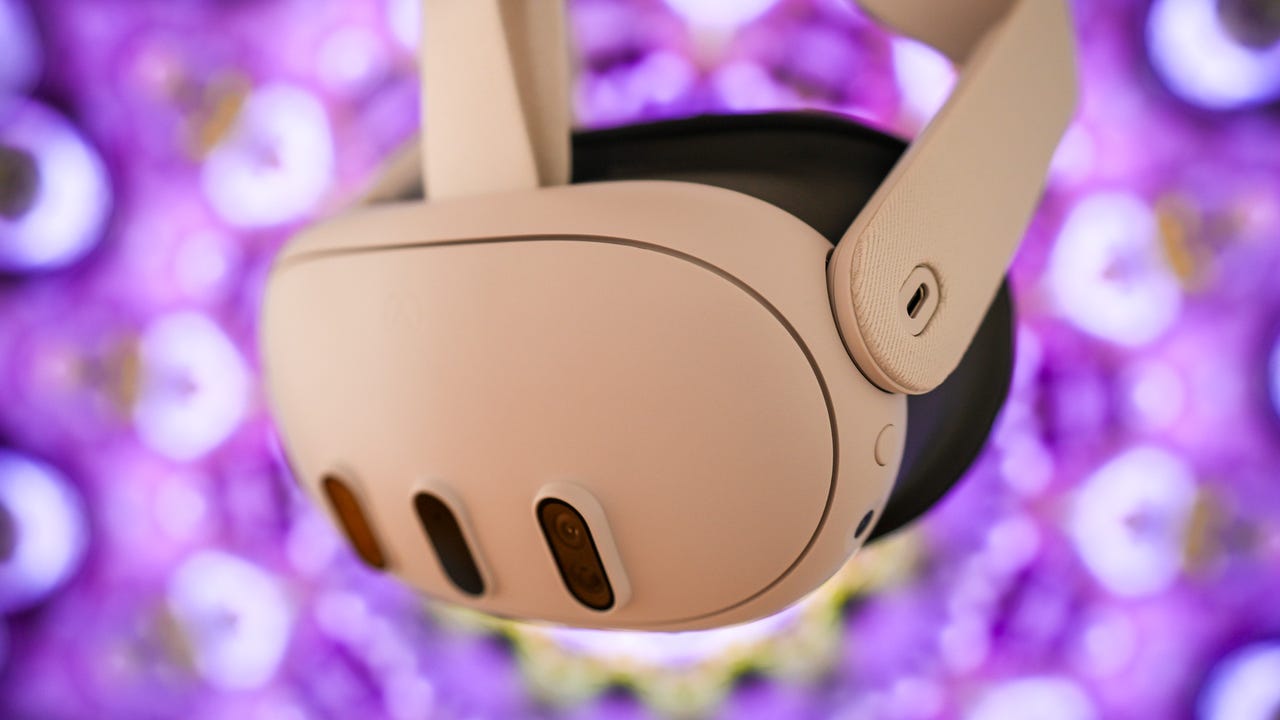Look out, Apple: Qualcomm's new VR chip competes directly with Vision Pro, with much cheaper headsets

Virtual reality (VR) and mixed reality (MR) headsets had a stellar 2023, and their trajectory looks even more promising to start the new year.
Part of the reason is that Qualcomm today unveiled a new Snapdragon XR2+ Gen 2 chipset, a single-chip architecture that will likely power many of the most capable and popular headsets released later this year. Think Meta Quest, HTC Vive, and more.
Also: ZDNET's product of the year: Meta Quest 3 is the quiet shocker of 2023
Succeeding last year's XR2 Gen 2, the plus variant brings improved GPU and CPU frequency -- up 15% and 20% respectively, support for 4.3K per eye resolution at 90fps, and the ability for headsets to field 12 or more cameras with on-device AI capabilities. The latter allows equipped models to better track user movements and surrounding objects for more immersive (and harmonious) VR and MR experiences.
As for efficiency gains, you'll still be getting the 50% improvement as the previous XR2 Gen 2 when stacked against the XR2 Gen 1 platform. Basically, there's no change on that front.
"(Snapdragon XR2+ Gen 2) will take XR productivity and entertainment to the next level by bringing spectacularly clear visuals to use cases such as room-scale screens, life-size overlays and virtual desktops," said Hugo Swart, vice president and general manager of XR, Qualcomm Technologies, Inc, in a Thursday press release.
Also: Would you believe a VR headset outsold AirPods during Black Friday? It happened
Clearly, the new silicon is aimed at headsets that can do it all -- with feature parity to the $3,500 gorilla in the room, Apple's upcoming Vision Pro headset -- though Qualcomm says it'll be priced accessibly for manufacturers to build hardware around. How affordable will these competing wearables be? Your guess is as good as mine. But considering we've already gotten products like the $500 Meta Quest 3 fielding the slightly less capable XR2 Gen 2 chip, the future of XR may not be as expensive as it seems.
The new Snapdragon XR2+ Gen 2 chipset is made in collaboration with Google and Samsung, both of which bring expertise in the Android ecosystem and developing mobile VR devices. The trio had announced plans to develop an XR platform back in February of 2023, likely in reaction to the then-rumored headset by Apple.
Also: Vision Pro led Samsung to reboot VR headset plans. It's now targeting end of 2024: report
By the end of the year, reports suggested that the three had gone back to the drawing board, with plans to redesign their first XR venture into something higher-end; 4K resolution per eye displays, a more polished user experience, and much more to go head to head with Apple's Vision Pro.
So, how does the new Snapdragon XR2+ Gen 2 stack up against Apple's M2-R1 duo? We'll have to see for ourselves when OEMs begin to produce hardware to leverage Qualcomm's chipset technology and Apple finally launches the Vision Pro (as soon as the end of January), confirming the last bits of its specifications. Stay tuned.
